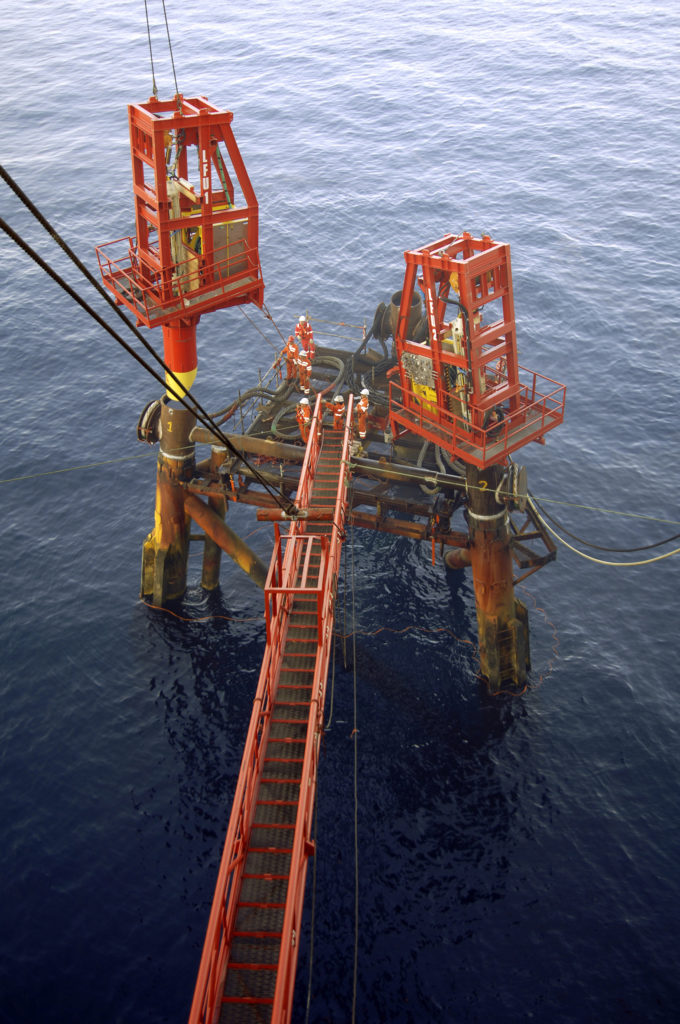Platform removal on Edda in 2006

HMC used Thialf – one of the world’s largest crane vessels – for this operation. Its work deck alone is bigger than two football pitches.
With more than 260 personnel on board, it resembles a large, well-organised anthill with people working everywhere between containers and heavy lifting gear.
The heaviest Edda lift was 750 tonnes, which could almost be considered a fleabite for Thialf with its crane capacity of no less than 14 000 tonnes.
“It’s important for us to harvest experience now,” explained Dag Roar Johansen, ConocoPhillips’ project manager. “This operation has been very successful.”
Each lift called for unique plans and special adjustments to ensure that it was carried out safely and in an environment-friendly manner.
Removing the bridge support presented a particular challenge on Edda. A cutting tool utilising sand and water under high pressure was lowered inside the structure.
This allowed its piles to be cut 2.5 metres below the seabed so no obstacles to future maritime activities were left. The operation was viewed with some trepidation because it demanded good weather and free access for the cutting equipment to the necessary depth between the seabed.
 historie, 2006, fjerningen av edda starter,
historie, 2006, fjerningen av edda starter,Another critical operation involved lifting the support and turning it through 90 degrees in order to place it horizontally on a barge.
A work platform was installed on top, with new pad eyes welded on for attaching steel ropes. Fixing one of these low down on one leg presented particular difficulties.
This was done while the support hung from the crane. When the pad eyes was ready, strong ropes were used to attach it to the other crane.
The operation was completed with both cranes lifting in tandem, turning the support and placing it on the barge. Once all the structures were attached to its deck, this vessel could sail for Vats.[REMOVE]Fotnote: Pioner, “Lette strukturer fjernes”, ConocoPhillips, August 2006.
Dropped objects pose safety riskSafe to fly